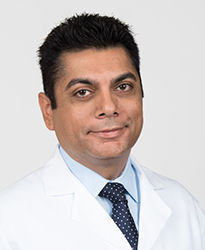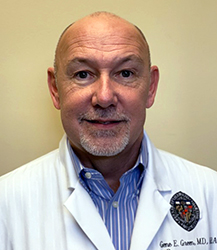Category Archives: Health & Wellness
What Are Statins? Benefits, Side Effects, and Why They’re Essential for Your Health
Statins are a powerful tool in managing high cholesterol and preventing heart disease. Since heart disease is the leading cause of death in the U.S., statins can play a vital role by lowering low-density lipoprotein (LDL) cholesterol. This “bad” cholesterol contributes to heart attacks, strokes, and other serious complications.
Some patients have concerns about statins, and we’re here to offer clear, supportive information to help you make informed choices about your health and address any misconceptions.
How Do Statins Work?
Statins are medications that lower cholesterol by reducing its production in the liver. While diet and exercise are key in managing cholesterol, statins offer additional protection for those at risk of cardiovascular disease. Statins are especially important for individuals with conditions like diabetes, coronary artery disease, or those who’ve had a stroke.
Statins could be prescribed if your cholesterol is high or if you have other significant risk factors. Unless immediate action is necessary, lifestyle changes are usually encouraged to see if they can reduce risk before introducing statins.
Common Side Effects of Statins
Most people tolerate statins well, but they can cause side effects as your body adjusts to the medication. Common side effects include:
- Headaches
- Nausea
- Muscle and joint aches
- Slight increase in blood sugar levels
Fortunately, these side effects are usually mild and temporary. Should you experience unusual symptoms, your MPCP provider can adjust your treatment plan to ensure you’re comfortable.
Who Should Be Cautious with Statins?
Certain individuals are at greater risk for side effects, including those who:
- Are over 80 years old
- Have liver or kidney disease
- Take multiple cholesterol-lowering medications
- Drink excessive amounts of alcohol
For those who fall into any of these categories, your MPCP provider will monitor your treatment closely and potentially adjust your dosage or suggest additional tests to ensure that statins are safe and effective.
Additional Risk Stratification Testing:
CIMT Testing
For patients unsure about starting statins, MPCP offers Carotid Intima-Media Thickness (CIMT) Testing at our Columbia Cardiology office. This simple, non-invasive test measures plaque buildup in your arteries and helps assess your risk of heart disease. CIMT can provide valuable insight into your heart health and help you evaluate your cardiovascular risk and the potential benefits of statins.
CT Coronary Artery Calcium Scoring
Coronary artery calcium (CAC) scoring is obtained through a CT scan. It is most helpful in patients who are being screened who have intermediate or borderline heart disease risk, particularly those with a family history of very early coronary artery disease, if statin therapy decision remains uncertain.
Apolipoprotein B (Apo B) Levels
Apolipoprotein B (Apo B) is a protein that transports cholesterol throughout your body, mainly carrying LDL and very low-density lipoprotein (VLDL), both of which can contribute to plaque buildup in your arteries. Consider Apo B as a taxi that primarily delivers “bad” cholesterol. High levels of Apo B in your blood can increase your risk of heart disease.
Performing an Apo B blood test to measure this protein and better understand your cholesterol levels is not routinely recommended. In certain cases, specifically in those with high triglyceride levels, elevated Apo B levels could indicate the need for cholesterol-lowering treatments, such as statins, to protect your heart health.
The Benefits of Statins
For most patients, the benefits of statins—such as reducing the risk of heart attack, stroke, and heart disease—far outweigh the potential risks. Statins have been proven to help people live longer, healthier lives by improving heart health.
If you have any concerns about statins or risk for other serious complications, your MPCP provider is here to help you decide what’s best for your health.
Dr. Green is a Maryland Primary Care Physicians, LLC partner and is certified by the American Board of Internal Medicine and the American Board of Family Medicine. He sees patients at the Glen Burnie office.
Should You Take a Multivitamin?
Do you take a multivitamin every day? You’re not alone—about one in three Americans rely on them to meet their nutritional needs. But are they necessary?
Multivitamins may not be necessary for most healthy adults who eat a balanced diet. Instead, focusing on nutrient-rich whole foods can provide all the vitamins and minerals your body needs.
Let’s examine why a balanced diet might be better than a multivitamin for most people (and the situations when a supplement may still be helpful).
Why Whole Foods Are Better Than Multivitamins
For most adults, research shows that multivitamins don’t offer significant benefits if you’re already getting nutrients from food:
- Limited Health Benefits: Studies from Johns Hopkins and Harvard suggest multivitamins don’t prevent chronic conditions like heart disease or cancer.
- More Than Just Vitamins: Whole foods provide fiber, antioxidants, and other beneficial compounds that supplements can’t match.
- Cost Savings: The average multivitamin costs between $10 and $30 monthly. Instead of spending that money on vitamins, investing in fresh, healthy foods that you enjoy eating can be better for your overall health.
What a Balanced Diet Looks Like
A nutrient-rich, satisfying diet can provide all the vitamins and minerals you need. Here’s what to focus on:
- Fruits and Vegetables: The CDC recommends filling half your plate with colorful fruits and vegetables at every meal. They contain vitamins like C and A, potassium, fiber, and antioxidants.
- Whole Grains: Brown rice, whole wheat bread, and oats are packed with B vitamins, iron, and fiber, which support digestion and energy.
- Lean Proteins: Choose lean protein sources such as fish, poultry, beans, and nuts. These provide essential amino acids, zinc, iron, and B vitamins.
- Dairy or Dairy Alternatives: Low-fat or fat-free dairy (or fortified alternatives like almond or soy milk) provides calcium and vitamin D, which are important for bone health.
When Might You Need a Multivitamin
There are situations where a multivitamin can be helpful, such as:
- Pregnancy: Extra folic acid is vital to support a healthy pregnancy.
- Health Conditions: Celiac disease or Crohn’s disease can impair nutrient absorption, making a supplement necessary.
- Dietary Restrictions: A multivitamin may fill in the gaps if you have limited access to various foods or follow a restricted diet (such as vegan).
Always speak with your Primary Care Provider if you think you need a supplement. They can guide you based on your specific needs and refer you to MPCP’s Nutrition specialists to create a unique plan if necessary.
Nourish Your Body Right With a Balanced Diet
A balanced diet is the best way for most adults to get the nutrients your body needs. While multivitamins seem convenient, they don’t offer the same benefits as whole foods. Instead, focus on building meals that include a variety of fruits, vegetables, whole grains, and lean proteins. Not only will this save you money, but it will also improve your overall health in ways that supplements can’t.
If you have questions about your nutritional needs or whether a multivitamin is right for you, speak with your MPCP provider to discuss your diet and health goals.
Justin Moy, DNP, joined Maryland Primary Care Physicians, LLC’s Columbia practice in 2024. He holds a Master of Science degree in Nursing and Doctor of Nursing Practice degree from University of Maryland, Baltimore.
Strains, Sprains and Broken Bones
By: AKBER AHMAD, M.D.
Imagine you’re walking the dog — you suddenly trip over a stone, fall and twist your ankle. You feel a sharp pain and your ankle starts to swell. You’re hurt, but is it a strain, sprain or broken bone? Should you apply ice, head to the emergency room, get an X-Ray?
Mild strains and sprains can often be treated at home, while broken bones should always be evaluated by your healthcare provider. Here’s how to handle each kind of injury.
Types of Injuries
Strains are damage to muscles and tendons when a joint is pulled or stretched too far. Strains are most common in the lower back or leg muscles, but can also occur in the wrist, ankle and other parts of the body. Pain, swelling and muscle spasms are usual symptoms of a strain.
Sprains are when ligaments are overstretched or torn. (Ligaments are fibrous tissue that connect two bones together in your joints.) Sprains often happen to ankles, knees and wrists. Symptoms include swelling and pain – similar to a strain – but usually also bruising.
Breaks are a fracture, chip or complete break in a bone. With a broken bone, you’ll probably experience sudden and severe pain, swelling and bruising, and you may not be able to move or put weight on the injury.
Diagnosing the injury
Mild sprains and strains can often be treated at home, but if you have more severe symptoms, consult your healthcare provider. If you suspect a broken bone, it needs to be evaluated.
A physical exam may be enough to identify the injury, but your provider may also recommend medical imaging, such as an X-Ray, MRI or CT scan, which produce detailed images of tissue and bones.
Treatment
Rest, ice, compression and elevation (RICE) is often the best treatment for sprains and strains. RICE relieves pain, limits swelling and speeds healing. Start RICE right after the injury and do all four parts at the same time:
- Move the injured area as little as possible.
- Apply ice to reduce inflammation. Cover the injured area with an ice pack wrapped in a thin towel for about 15 to 20 minutes, three to four times a day.
- Using a pressure bandage helps prevent or reduce swelling. Use an elastic bandage and wrap the injured area snuggly, but don’t cut off your circulation.
- Raise the injured area above the level of your heart. Prop up a leg or arm while resting it.
Using RICE, you may soon see improvement in an injury. But if your symptoms continue after a few days or if they get worse, contact your healthcare provider.
 Dr. Ahmad cares for patients in the Arnold office. He is certified by the American Board of Internal Medicine and earned his medical degree from the Medical College of Virginia/Virginia Commonwealth University.
Dr. Ahmad cares for patients in the Arnold office. He is certified by the American Board of Internal Medicine and earned his medical degree from the Medical College of Virginia/Virginia Commonwealth University.
Introducing Dr. Margaret Wang
People sometimes ask if I have always wanted to be a doctor. No, but it is certainly one of the top-rated dreams for an Asian immigrant.
Growing up in Beijing in the ‘80s, I rarely visited the pediatrician, and my family usually depended on traditional Chinese medicine. For example, whenever a runny nose and a fever set in, I would be given a sweetened herbal medication called Ban Lan Gen and be forced under a stack of blankets until my pajamas were soaked with sweat, which means that the fever had broken and I would soon recover.
When it comes to medicine, the average Chinese person seems quite torn between their traditional medicine and Western practices. Not many are well-versed in traditional medicine — featuring powerful potions and genuine side effects — but every Chinese person has been steeped in a unique mixture of culture, tradition filled with anecdotes and myths, and a dependence on nature and a distrust for the man-made.
I myself harbor a great interest in acupuncture and toxicology. While I studied at Georgetown University School of Medicine, I took a class on alternative and complementary medicine, which taught me traditional Chinese medicine is not to be trifled with, and that Asian people who are scared of strong Western medications should exercise equal caution over Chinese potions.
Although I share in this cultural understanding about the human body and health, my systematic training in Western medicine remains the pillar of my practice as an internist. This can sometimes be challenging with Asian patients. They often see little value in preventative care and regular checkups, which I appreciate as the basis of sound medical care. Patients can also give pushback about starting a medication, because they believe — and rightly so — that everything with an effect has a side effect.
In the end, it comes down to communicating outside of typical Western medical care — more in the realm of preference, philosophy, and faith. These human discussions provide an important context for medical care and is what makes primary care most interesting for me. Not all doctors share this view, but that is okay. I think it enhances my effectiveness and benefits my patients.
2024 marks my tenth year practicing as an internal medicine doctor. I first spent some time as a hospitalist and at an urgent care center, but I seem to have settled in the right spot at MPCP, for which I am truly thankful. And if you’ve read this article to the end, I wish you a blessed new year.
 Dr. Wang is a Maryland Primary Care Physicians partner and is certified by the American Board of Internal Medicine. She received her medical degree from Georgetown University School of Medicine. She cares for patients in MPCP’s Columbia office.
Dr. Wang is a Maryland Primary Care Physicians partner and is certified by the American Board of Internal Medicine. She received her medical degree from Georgetown University School of Medicine. She cares for patients in MPCP’s Columbia office.





